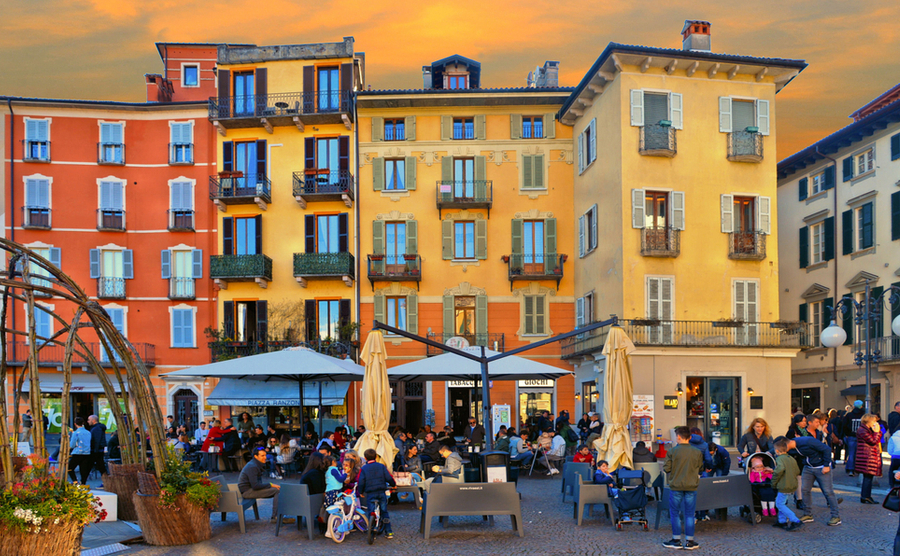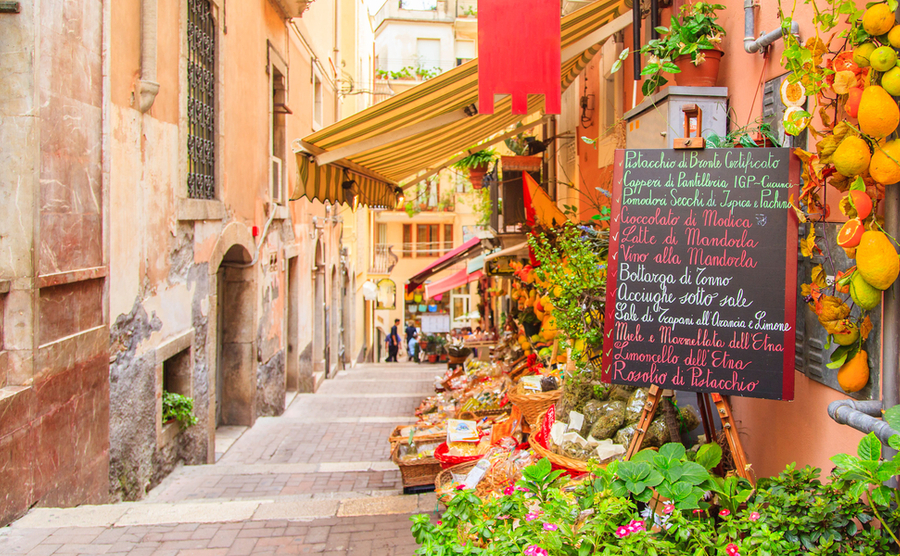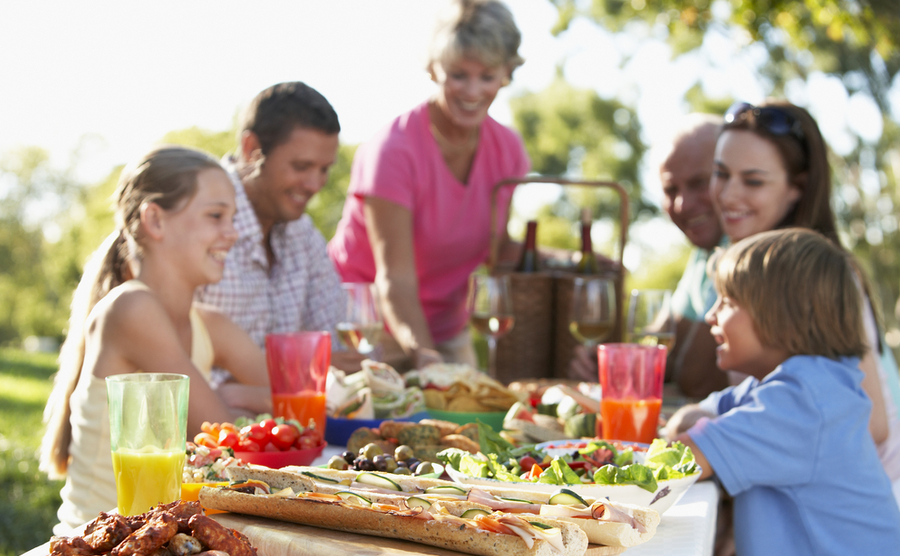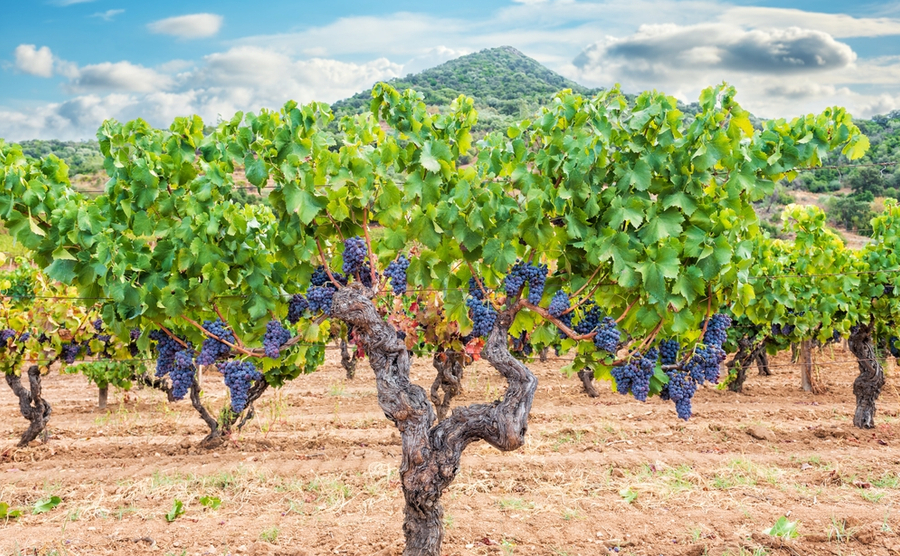It’s well known that the Mediterranean diet is one of the healthiest on the planet, as well as among the easiest to prepare. But Italian cuisine can also make you happier and live a longer life.
In a recent survey, two thirds of people said they would like to live a more Italian lifestyle. No wonder, when it was the Italians who invented the term ‘la dolce vita” – the sweet life. A large part of that is based around food. Not just the menu and flavours of Italian cuisine, but also where and how you eat it.
This is not a new thing for Italians. The first of the scrolls charred in the Pompeii eruption of AD79 and now read by AI is by a philosopher discussing food, especially capers, and the source of pleasure.
Find homes in Italy via our property portal.
La Dolce Vita?
Italian car manufacturer FIAT commissioned the research and has since launched a Guide on How to Live Like An Italian, or the La Dolce Vita Guide where they gathered together experts on Italian living, culture, cuisine and lifestyle.
Of the 2,000 people surveyed in the UK, 54% had been to Italy, on average visiting three times. Nine in ten were keen to go again.
Nearly half of those who had been to Italy were inspired to slow down when they got home and to try and live in the moment. Almost half of those surveyed would like to eat more fresh, local produce, while 31% would like to spend more time in the countryside.

Table for two? (poludziber / Shutterstock.com)
So, an important element of la dolce vita is spending more time with family and living a slower pace of life. With the pressure of fast-paced jobs and long hours, even the opportunity to sit outside a restaurant and savour ones food seems just a dream for many.
If the plumber doesn’t turn up on Tuesday, chances are he’ll turn up eventually, on a Tuesday.
Everyone deserves a little bit of Italy, even if it’s spending a few weeks in your Italian holiday home, to unwind and recharge.
However, to live like an Italian, you should have a home here. I have lived here for sixteen years now, and still love it.
Adjusting to the Italian lifestyle
There are some aspects of Italian life that the more Anglo-Saxon of us seem to find difficult to adjust to. For example, it can be hard at first to stop looking at your watch and planning everything. You have to go with the flow. If the plumber doesn’t turn up on Tuesday, chances are he’ll turn up eventually, on a Tuesday.
1. Eat local produce
Whether it’s Marmite, Tim Tams or root beer, those British, Australian or US foods you struggle to buy abroad – let them go! Rather than go hunting on the internet and in supermarkets for them, replace them with Italian ones. There are many Italian food and beverages that you really shouldn’t miss.
You may also have good intentions to grow vegetables and develop a passion for cooking. Great idea, but don’t forget that the weekly market has fresh vegetables at very good prices. Buying locally, also helps the local economy and sellers will appreciate your custom.

Your local mini-mart, Italian style
When you live in Italy it is easier to eat healthy food, not least because it’s difficult to find ultra-processed ready meals and fast food restaurants. Then again, some classic Italian dishes are easy to cook, whether a good pasta dish or a pizza. When getting more adventurous, I would suggest buying fresh local produce that is in season and asking an Italian neighbour how to cook it.
2. The sweet life
Those with a sweet tooth should beware. Italy has more than its fair share of tempting sweet treats, from gelato to cakes and biscuits. The pasticceria is the place to go on a Sunday morning. Everyone is buying trays of little cakes, wrapped like a gift, to take to lunch with family or friends.
3. Eating al fresco

The Italian weather is condusive to eating outdoors
If your dream is escaping to the countryside and eating outside at a big table surrounded by friends and family, it can be hard when your family and old friends are back in the UK or US. Don’t worry; if you show an interest in the cultural heritage and food, and make yourself known in local cafes, shops and community events, you will soon make new friends. At first, you may want to invite other expats for lunch, to exchange recommendations.
Recognition for Italian cuisine
The Italian government has put Italian cuisine up as a candidate to join the UNESCO list of “intangible cultural heritage”. Italian cuisine is not just about the ingredients used. It is a combination of Italian cultural heritage and the use of fresh local produce. The preparation and eating of a meal in Italy is an occasion for sharing and talking. The whole experience cannot be successfully copied, even though many companies in other countries have tried.
We will discover by the end of 2025 if it will be included, but if so it will join 19 other elements of Italian cultural heritage already on the list. These include the art of the Neapolitan pizza maker (Pizzaiuolo), truffle hunting and, indeed, the Mediterannean diet as a whole.
Teaching the younger generations
The worry the world over is that kids are spoending too long gazing at screens and not enough time in meaningful communication. But in Italy it is normal to see three generations of a family eating lunch together and talking. The older generation pass on the traditional recipes, and how to grow and prepare the local produce. They teach them about traditional festivals and the food that goes with them. For example, there are certain cakes that are enjoyed on different occasions. Such as “Chiacchiere” during Carnival, “Colomba di Pasqua” at Easter and “Panettone” at Christmas.
The Sardinian ingredients for a long life
In return, there is evidence that one of the keys to a long life is spending time with the younger generation. That is particularly evident in Italy, which is 6th out of over 200 countries for longevity
Particularly in Sardinia. Thirteen villages located in the historic regions of Barbagia and Ogliastra in Sardinia, have been recognised as one of the world’s five “Blue Zones”. These are places around the world where an unusually large number of people live to 100 years or older.

The harvest in Sardinia
How do Italians – and Sardinians in particular – manage to live so well, for so long?
An active lifestyle
In this area the older generation stays active. It isn’t a particularly wealthy area, but people tend animals, do gardening, their own cleaning, and go foraging for wild greens, asparagus, berries and mushrooms. Their lifestyle includes time for religion, family and neighbours, with a good dose of affection, smiles and a relaxed outlook on life.
Eating well
What they eat also plays an important role in their longevity. For them, Italian cuisine includes plenty of vegetables, greens, herbs and salads, which they often grow themselves. They also regularly eat fava beans, chickpeas, tomatoes and bean soup with fennel.
The local goat and sheep’s milk products of Sardinian cuisin, are thought to have anti-inflammatory properties and have been found to lower bad cholesterol. Also, the traditional flat bread is made of high-protein, low-gluten Triticum whole grain.
Healthy drinking
As well as drinking a lot of water, people in Sardinia enjoy a milk thistle tea, which is thought to clean the liver. Even a little of the Sardinian red wine from the mountain regions is said to be good for your health. It has antioxidants that can help protect against ailments like diabetes and heart disease.
Italian Agriculture
With Italy’s varied landscape, weather and soil, comes a great variety of agricultural possibilities. According to the last national agricultural census there were 1.6 million farms in Italy, most being small family-run plots of around 20 acres. It is very possible to buy a smallholding on quite a low budget in Italy and grow some of your own food.
Around 63% of farms are located in southern Italy, where you will see mainly wheat, citrus fruits and olive trees. The northern part of Italy produces primarily maize, rice, sugar beets, soybeans, meat, fruits and dairy products.
Of course, Italy is one of the largest producers of wine in the world and a leading producer of olive oil. The country also grows a lot of fruit such as apples, pears, grapes, oranges, lemons, apricots, peaches, cherries, plums, strawberries, water melon and kiwifruits. Vegetables that grow well here include artichokes and tomatoes. You will also see a number of hazelnut and almonds trees in some areas. In fact, many of the hazelnuts used in Nutella, and other Ferrero products, are grown in Piedmont, Lazio and Campania.
North vs South
When deciding where to buy property, you may want to consider how tastes in food differ between the north and south of Italy. Italians from the northern part of the country tend to love stuffed meats, savoury polenta and rich creamy sauces. While in the south they might prefer light olive oils, fresh seafood and a tomato sauce.
Which do you prefer? A northern risotto or a southern pasta? Parmigiano cheese or a fresh mozzarella bufala? Tiramusu or canolli? Soft creamy polenta or the sweet and sour taste of a Sicilian caponata, made with fried aubergines, celery and tomatoes?
Southern Italian cuisine
The Mediterranean Sea is a big influence on Southern Italian cuisine. With fresh seafood on your doorstep and a warm climate, perfect for growing fresh herbs, vegetables and fruit, you have a winning combination. The abundance of tomatoes and olive oil in Southern Italy has led to the creation of many popular Italian dishes, including the famous pizza. Pasta and bread are also a regular part of the southern diet.
Northern Italian cuisine
Northern Italian food comes more from the land, and there is a greater array of dairy products used. The mountain terrain is perfect for grazing sheep, goats, and cows that produce Parmigiano-Reggiano, Gorgonzola and Pecorino cheeses. Beef and veal are the most popular meats. Although pasta is commonly eaten in the north, you will also see polenta and rice used a lot too.
Whether you choose to buy a property in the north or south of Italy, you will meet people who enjoy proudly singing the praises of their local food and cultural heritage. They talk passionately about the food, festivals, music, art, traditional dances, sport and beautiful architecture, because these are what make a happy community. Now is the time to eat and live like an Italian.










